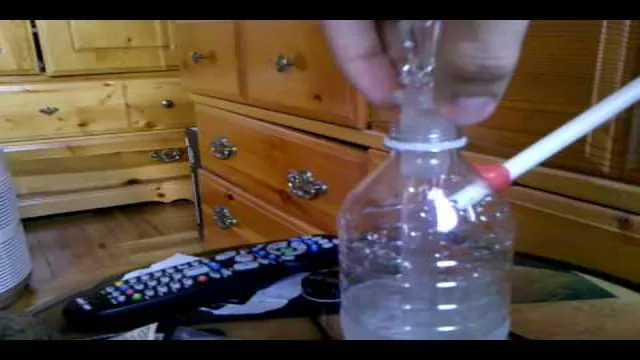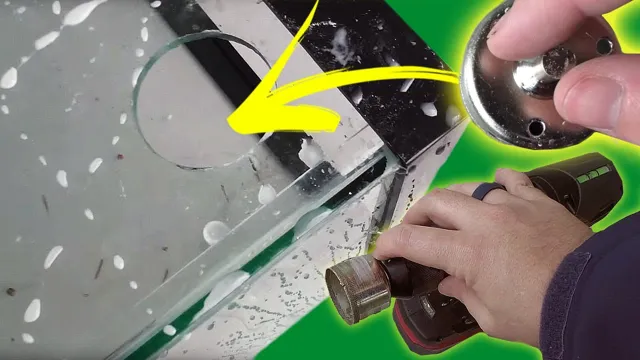Activated carbon is an extremely effective tool for keeping your aquarium water clear and free of impurities. However, over time, the carbon will become saturated with the materials it has absorbed and will need to be cleaned or replaced. Cleaning activated carbon can be a bit tricky, but doing so properly is crucial to ensure that it continues to function as it should.
In this blog post, we’ll go over the best methods for cleaning activated carbon in your aquarium and keeping your tank healthy and thriving. So, let’s dive in!
Why Clean Activated Carbon?
If you’re an aquarium owner, you likely know the importance of maintaining clean and healthy water for your fish and aquatic plants. One aspect of this maintenance is ensuring that your activated carbon stays clean. Activated carbon is an essential part of many aquarium filtration systems, as it helps to remove harmful chemicals and impurities from the water.
However, over time, activated carbon can become clogged with debris and lose its effectiveness. That’s why it’s essential to clean your activated carbon periodically. But how do you do it? First, remove the activated carbon from your filter and rinse it with water to remove any loose debris.
Then, soak it in a solution of water and chlorine bleach for several hours, making sure to rinse it thoroughly afterward to remove any residual bleach. By regularly cleaning your activated carbon, you can help keep your aquarium water clean and healthy for your fish and aquatic plants.
Removing Contaminants
Activated Carbon Activated carbon is a commonly used material for removing contaminants from various environments such as air, water, and soil. It is extremely porous and has a large surface area, making it an ideal material for adsorbing impurities. However, over time, the activated carbon becomes saturated with the contaminants it has captured and must be cleaned or replaced to maintain its effectiveness.
Cleaning the activated carbon involves removing the adsorbed contaminants, which can be achieved through various processes, such as thermal reactivation or chemical wash. In addition to maintaining the effectiveness of the activated carbon, regular cleaning also extends its lifespan, reducing the need for frequent replacements. Overall, keeping activated carbon clean is crucial to ensuring the purity of the environment it is used in and maximizing its adsorption capacity.

Maintaining Performance
Maintaining activated carbon performance is crucial in ensuring that it continues to effectively remove impurities from water or air. One way to maintain its performance is by cleaning the activated carbon regularly, as this prevents clogging and helps to remove accumulated particles. Over time, activated carbon can become saturated with impurities, which makes it less effective at removing new contaminants.
By cleaning the carbon, you can restore its surface area and pore structure, allowing it to function optimally once again. Making sure to use proper cleaning techniques and timing, such as backflushing or chemical treatments, is key to keeping your activated carbon in top condition. By taking these steps, you can prolong the lifespan of your activated carbon and ensure it provides consistent and effective purification results.
The Cleaning Process
If you own an aquarium, then it’s important to keep the water clean and healthy for your inhabitants. This means making sure that your activated carbon, which helps filter out impurities, is always in good condition. The cleaning process for activated carbon isn’t difficult, but it does take some time and effort.
First, rinse the carbon thoroughly with water to remove any dust or debris. Next, soak the carbon in a solution of aquarium salt and water for several hours, this will help remove any impurities that may have built up. After soaking, rinse the carbon again with clean water until the water runs clear. (See Also: How to Aquarium Decorations Outside to Enhance Your Outdoor Space)
Finally, let the carbon dry completely before placing it back into your filter. By following this simple cleaning process, you can maintain the health of your aquarium and ensure that your fish and other aquatic life are happy and thriving.
Step 1: Remove Carbon from Aquarium
When it comes to maintaining a healthy and thriving aquarium, keeping it clean should be your top priority. One of the key steps in the cleaning process is removing the carbon from your aquarium. Carbon is a commonly used filter media that helps remove impurities and odors from the water.
However, over time, the carbon can become saturated and lose its effectiveness. This is why experts recommend changing the carbon every 4-6 weeks or as needed. To remove the carbon, start by turning off any equipment that may be attached to it, such as filters or pumps.
Then, carefully remove the carbon from the filter and dispose of it properly. To prevent any leftover carbon from disrupting the water parameters, make sure to rinse the filter thoroughly before adding new carbon or reattaching it to the aquarium. Remember, a clean aquarium is a happy aquarium, so take the time to properly maintain your tank to ensure the health and happiness of your aquatic friends.
Step 2: Rinse With Water
After scrubbing away dirt and grime from your item, the next step in the cleaning process is to rinse it with water. This step helps to remove any remaining cleaning solution or dirt residue, leaving your item looking clean and fresh. Depending on the size and material of the item, you can either rinse it under running water or use a damp cloth to wipe away any leftover residue.
Make sure to rinse thoroughly and remove any excess water with a towel to prevent streaks or water stains. This step is essential in achieving a squeaky-clean finish and ensuring that your item is ready to use or display once again. So, don’t forget to rinse your items with water to complete the cleaning process and enjoy a refreshed and renewed item.
Step 3: Soak in Hydrogen Peroxide
After scrubbing your blinds thoroughly, it’s time to soak them in hydrogen peroxide to tackle any remaining stains. Hydrogen peroxide is an effective cleaning agent that’s readily available in most households. Before soaking your blinds, mix equal parts water and hydrogen peroxide in a bowl.
Next, dip a clean cloth or sponge into the solution and apply it to your blinds, taking care to get into every nook and cranny. Allow the solution to sit for about fifteen minutes before rinsing the blinds with clean water. Soaking your blinds in hydrogen peroxide not only helps to kill germs and bacteria but also breaks down dirt and grime, leaving your blinds looking clean and fresh.
Make sure to wear gloves while handling hydrogen peroxide as it can irritate the skin. Once you’ve completed the hydrogen peroxide soak, allow your blinds to dry naturally or wipe them down with a clean towel. Following these simple steps will help you achieve sparkling clean blinds that will make your home look and feel fresh.
Step 4: Rinse and Dry
Once you’ve scrubbed away all the grime and dirt from your items, it’s time to rinse them off thoroughly with clean water. This will help remove any remaining soap or cleaning solution residue. When rinsing, make sure to cover every nook and cranny of your item, as any leftover cleaning solution can damage it over time.
After rinsing, shake off any excess water and gently wipe the surface using a clean, dry cloth. Leave the item to air dry completely before using or storing it again. Remember, moisture can cause damage and corrosion over time, so it’s important to ensure that the item is completely dry before putting it away. (See Also: How to Make Good Bacteria in Aquarium: Tips for Optimal Aquatic Health)
Happy cleaning!
When to Clean Activated Carbon
Keeping an aquarium clean and healthy for aquatic life can be a daunting task, but with the right tools and knowledge, it can be maintained with ease. One of the essential components of an aquarium filter is activated carbon. It helps to remove toxins and impurities from the water to ensure a healthy environment for fish and other aquatic life.
However, activated carbon needs to be cleaned periodically to work at maximum efficiency. But, when should you clean activated carbon in your aquarium? The answer depends on various factors such as the size of the aquarium, the number of fish, and the amount of food being fed. A general rule of thumb is to replace the activated carbon every four weeks to ensure continued efficiency.
However, if you notice the water in the aquarium is cloudy or there is an unpleasant odor, it may be time to clean the activated carbon. By cleaning, you should remove the debris and dirt that have accumulated. Luckily, cleaning activated carbon for the aquarium is a simple process, involving rinsing the carbon with water thoroughly and allowing it to dry before placing it back into the filter.
By regularly maintaining your activated carbon, you can ensure that your aquarium remains clean and healthy.
Frequency of Cleaning
Activated carbon is an efficient means of removing impurities from various liquids and gases. This process, also known as adsorption, traps pollutants within the carbon’s porous structure. However, over time, these impurities saturate the activated carbon, reducing its effectiveness.
Generally, the frequency of cleaning depends on the specific application and how much the carbon filter is being used. Industries that employ activated carbon for water purification typically replace their filters every six months to a year. Meanwhile, petrochemical and pharmaceutical companies may be dealing with much more extreme levels of contaminants and opt to replace their filters more often.
Regardless of the industry or use, monitoring the filter’s efficiency is crucial to maintaining performance. Once pollutants start passing through the filter and re-entering the system, it’s time for a replacement or cleaning. By keeping an eye on filter usage and performance, industries can ensure their carbon filters are functioning efficiently and effectively, saving both money and resources in the long run.
Conclusion
In conclusion, cleaning activated carbon for your aquarium is a simple task that can make a big difference in the health and clarity of your tank. Just remember to follow the steps carefully, use the right equipment, and give your carbon the TLC it deserves. And with a little bit of effort, your aquarium will be sparkling clean and your fish will be happier than ever.
So why settle for murky water when you can have crystal clear perfection? Clean your activated carbon and enjoy the beauty of your underwater world!” (See Also: How to Kill Aquarium Snails with Salt: A Step-by-Step Guide to Eliminating Snail Infestations)
FAQs
Why is it important to clean activated carbon in an aquarium?
Activated carbon can become clogged with debris and lose its effectiveness in filtering out harmful chemicals and impurities from the water. Cleaning it regularly ensures that it continues to perform its function properly.
How often should you clean activated carbon in an aquarium?
It’s recommended to clean activated carbon in an aquarium every two to four weeks, or as needed depending on the tank’s bio-load and water quality.
What is the best way to clean activated carbon in an aquarium?
The best way to clean activated carbon in an aquarium is by rinsing it with dechlorinated water to remove any debris or impurities. Avoid using tap water as it may contain chlorine or other chemicals harmful to fish.
Can activated carbon be reused after cleaning?
Yes, activated carbon can be reused after cleaning. However, its effectiveness may decrease over time, and it’s recommended to replace it every three to six months.
How do you know when activated carbon needs to be replaced?
Activated carbon needs to be replaced when it becomes saturated with impurities and debris, which may cause the water to become cloudy or develop an unpleasant odor.
Can you clean activated carbon while it’s in the filter?
Yes, activated carbon can be cleaned while it’s in the filter. Simply rinse it with dechlorinated water and return it to the filter.
Are there any alternatives to using activated carbon in an aquarium?
Yes, there are other types of filter media that can be used instead of activated carbon, such as bio-balls, ceramic rings, and sponge filters. These options can provide biological and mechanical filtration, but may not be as effective in removing chemical impurities from the water.







